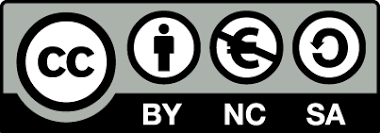บทคัดย่อ
เป็นเวลากว่า 2 ทศวรรษแล้วที่ค่าใช้จ่ายของระบบสวัสดิการรักษาพยาบาลข้าราชการซึ่งใช้ระบบการจ่ายเงินแบบปลายเปิดเติบโตอย่างรวดเร็วและต่อเนื่อง โดยเฉพาะอย่างยิ่งในช่วงหลังที่ค่ารักษาพยาบาลผู้ป่วยนอกสูงกว่าผู้ป่วยใน การวิเคราะห์ข้อมูลการใช้ยาของโรงพยาบาลรัฐขนาดใหญ่ จาก 26 ใน 34 แห่งในระบบจ่ายตรงของผู้ป่วยนอกในปี 2552 พบสัดส่วนของยานอกบัญชียาหลักแห่งชาติเฉลี่ยร้อยละ 41 ตามจำนวนครั้งการสั่งใช้ และร้อยละ 67 ตามมูลค่ายา โดยโรงพยาบาลมหาวิทยาลัยมีสัดส่วนการสั่งใช้ยานอกบัญชียาหลักฯ สูงที่สุด (ร้อยละ 45 ของใบสั่งยา) ในขณะที่โรงพยาบาลสังกัดกระทรวงสาธารณสุขและสังกัดอื่นมีสัดส่วนต่ำกว่า (ร้อยละ 35 และ 42 ตามลำดับ) ทั้งนี้ สัดส่วนตามมูลค่าของยานอกบัญชียาหลักฯ มีค่าใกล้เคียงกัน (ร้อยละ 66-68) กลุ่มยาที่มีค่าใช้จ่ายสูง 6 อันดับแรกซึ่งเป็นสัดส่วนประมาณร้อยละ 41 ของค่าใช้จ่ายของยาทุกรายการ ได้แก่ ยาควบคุมไขมันในเลือด ยาต้านมะเร็ง ยาต้านข้ออักเสบ ยาต้านกระดูกพรุน ยากลุ่ม ACEI-ARB และยาลดการหลั่งกรด ตามลำดับ โดยมีสัดส่วนของยานอกบัญชียาหลักฯ ตามมูลค่า ตั้งแต่ ร้อยละ 86.4 สำหรับยาควบคุมไขมันในเลือด ร้อยละ 87.8 สำหรับยา ACEI-ARB ร้อยละ 93.6 สำหรับยาลดการหลั่งกรด และสูงถึงร้อยละ 97.2 สำหรับยาต้านข้ออักเสบ แม้ว่ากลุ่มยาเหล่านี้จะมียาในบัญชียาหลักแห่งชาติที่ผลิตได้ในประเทศให้เลือกใช้ได้หลายรายการ นอกจากนี้ ค่าใช้จ่ายร้อยละ 92.3, 86.0, 65.0 และ 64.0 ของกลุ่มยาลดการหลั่งกรด ยาควบคุมไขมันในเลือด ยา ACEI-ARB และยาต้านข้ออักเสบ ตามลำดับ เกิดจากยาที่มีผู้จำหน่ายรายเดียว จากกรณีศึกษาในโรงพยาบาลมหาวิทยาลัยแห่งหนึ่งซึ่งสามารถควบคุมการใช้ยานอกบัญชียาหลักฯ ได้ดีกว่าโรงพยาบาลอีกหลายแห่ง พบว่า ภาวะผู้นำของผู้บริหารและความเข้มแข็งของคณะกรรมการเภสัชกรรมและการบำบัดของโรงพยาบาลมีความสำคัญต่อการควบคุมค่าใช้จ่ายด้านยา ซึ่งจะช่วยลดภาวะคุกคามจากกลยุทธ์ทางการตลาดของบริษัทยา ทัศนคติทางลบของผู้สั่งใช้ยาต่อยาในบัญชียาหลักแห่งชาติ รวมทั้งการไม่มีนโยบายที่ชัดเจนจากส่วนกลาง ดังนั้นควรส่งเสริมให้มีการกำหนดนโยบายควบคุมการใช้ยาที่ชัดเจน ได้แก่ การใช้นโยบายราคาอ้างอิงสำหรับการเบิกจ่าย การสร้างระบบติดตามและควบคุมกำกับโดยอาศัยการประมวลข้อมูลการใช้ยาของโรงพยาบาลที่เฉพาะเจาะจงต่อผู้สั่งใช้รายบุคคล นอกจากนี้ ควรมีการสร้างแรงจูงใจแก่โรงพยาบาลที่สามารถควบคุมค่าใช้จ่ายได้ และการพัฒนาศักยภาพของบุคคลากรในการวิเคราะห์ข้อมูล และการมีเวทีแลกเปลี่ยนเรียนรู้
บทคัดย่อ
Over two decades, the expenditure for Civil Servant Medical Benefit Scheme (CSMBS) which employed
the open-ended provider payment methods has a continual double-digit annual growth. In recent
years, the outpatient expenditure outpaced the inpatient one. An analysis of prescriptions and expenditures
of the outpatient drugs of 26 out of 34 large public hospitals under the direct billing system in 2009
revealed that on average 41% of total prescriptions and 67% of expenditure belonged to those not covered
by the current National Lists of Essential Medicines. The highest proportion of the non-essential (NE)
drug prescriptions occurred in university hospitals (45%), whereas the NE proportion in the Ministry of
Public Health hospitals and other ministries was relatively lower (35% and 42%, respectively). However,
the NE share of drug expenditure was similar across the three hospital types (66-68%). The top six therapeutic
classes of drugs, sharing 41% of total drug expenditure, were antilipids, anticancers, antiosteoarthritis
(nonsteroidal anti-inflammatory drugs -NSAID, COX-2 inhibitors and symptomatic slow-acting drugs
for osteoarthritis -SYSADOA), antiosteoporosis, angiotensin converting enzyme inhibitors (ACEI) and
antigiotensin-2 receptor blockers (ARB), and antisecretory/antiulcers (histamine-2 receptor antagonists -
H2RA and proton pump inhibitors -PPI). The NE drugs accounted for 86.4% of the expenditure for antilipids,
87.8% for ACEI-ARB, 93.6% for antiulcers and 97.2% for antiosteoarthritis. With respect to market status,
the single-source products accounted for 92.3, 86.0, 65.0, and 44.0% of the expenditure for antiulcers,
antilipids, ACEI-ARB, and antiosteoarthritis, respectively. A case study of university hospital with relatively
low use of NE drugs revealed that leadership of the hospital administrator and the Pharmacy and
Therapeutic committee is a key to success of cost containment that can counteract threats from market
strategies of drug industry and misunderstanding of prescribers toward the use of the NE drugs. It was
recommended the central administration of CSMBS should give priority to cost-containment policies including
reference pricing systems for drug reimbursement, monitoring and evaluation using prescriberspecific
drug utilization data. In addition, appropriate financial incentive for well-performed hospitals,
capacity building for hospital personnel in data analysis and platforms for knowledge sharing should be
introduced.


